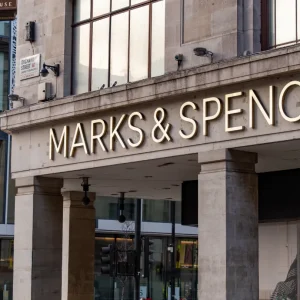
It’s difficult to remember a time when the British passport was so prominent in public discourse as it has been in recent weeks. But amid the furore around the manufacturer of the new passport was a genuine concern for public safety and the protection of citizens’ data.
The tender, which we’re very proud to have won, had security at its heart – and in a context of a highly-charged climate of cross-border crime and terrorism, it’s crucial that new passports use a variety of innovative techniques to prevent criminals from taking advantage of them.
Criminal techniques to tamper with passports have become as broad as they are diverse, so much so that it prompted the UN to address the issue, calling upon all states to ensure that their passports were secure against new and emerging threats[1]. Passports are only ever as reliable and satisfactory as the security systems behind their production, issuance, control and inspection. Through new technologies and preventative techniques, the evolution of the passport is now one of the most secure documents in the world. So how will the UK passport protect us from fraud?
Preventing Forgery
Forgery is the most common concern with passport fraud. Using stolen, borrowed or lost passports, criminals attempt to steal the identity of someone else, allowing them to carry out nefarious activity with no immediate link to their real identity.
To combat this, border control measures have been tightened. The chip in modern passports stores biometrics, requiring the holder to offer a second form of ID authentication. For instance, this is why at many airports, the traveller requires both their passport and a complete facial scan to successfully pass through.

Often, forgery is the result of sophisticated tampering by the fraudster. Popular practices include additional lamination to slightly alter the portrait, substituting biographical data pages, and modifying the travel history to make the passport ‘clean’ before crossing a border. Lamination and substituting the image involves tampering with a valid document to alter the portrait and go undetected.
To do this, fraudsters often place a very thin laminate film on top of the image to distort its appearance or carefully cut and remove the existing image before inserting their own. To combat this, the modern passport now contains embossed features, stronger secondary images and layered printing to make any evidence of tampering much easier for officials to spot.
Similarly, substituting data pages involves removing the original page through disassembling stitching and replacing with a counterfeit copy. To protect against this, passports are now printed in complex designs, combining various layers of printing and features laminated together, while stitching has also been upgraded to become near impossible to emulate.
In addition, watermarks remain a key security feature against fraudulent travel history. Criminals will remove border stamps or create their own to boost their credibility at border control if they wish to hide how long they have remained in a country. This is usually carried out by scraping the endorsement away. However, this damages the watermark as well as secure printing on the passport paper and so is a clear sign of criminal influence.
The Age of Polycarbonate
Yet, modern passport security extends beyond these counter measures. Polycarbonate card, the replacement for traditional passport paper, is now a fundamental safety feature which has revolutionised the protection of our identities. It operates on a 1-block concept, where all security and ID data features are integrated in such a way that they protect each other from any fraud attempt. For instance, within these cards, the passport photo is locked in-between secure artwork and printed features, such as positive or negative embossing. Any attempt to change the photo destroys a portion of the printed features, while attempting to access the layers of the document will leave visible evidence of tampering. Polycarbonate is extremely durable, in heat or through intensive usage and is the most reliable and secure material for ID – which is why we’ll be using it to create the new British passport.
While passports are, and always will be, a symbol of national pride and sovereignty, it is imperative we understand that their security relies on how they are made. Common threats such as forgery, alterations and counterfeiting are overcome by modern security features in passports making them either easier to detect or near impossible to replicate. As fraudsters develop ever more sophisticated methods, it’s vital our passport security is able to evolve and progress to stay one step ahead.






